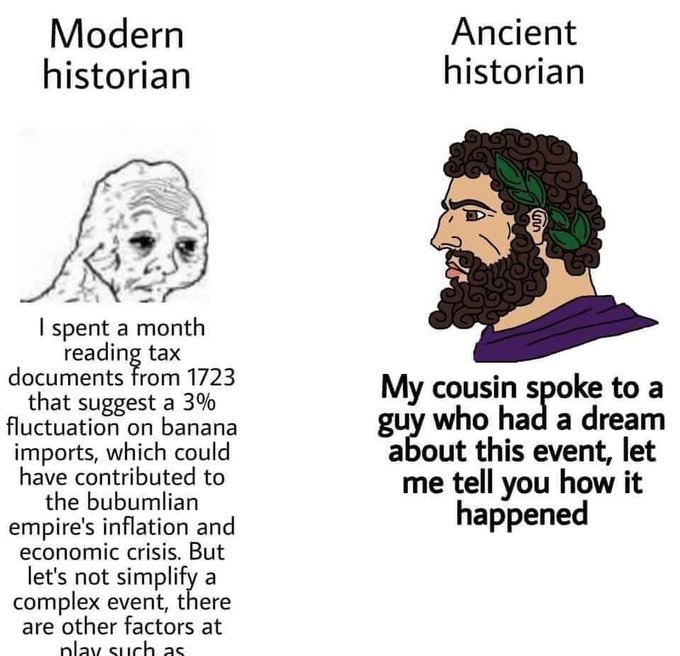At Extra Muros, Bruce Ivar Gudmundsson contrasts the way historians used to research and write their books with the much more convenient, yet still imperfect methods of modern historians:
In days of yore, when visiting an archive required long journeys by sea, or, at the very least, a tiring trek o’er moor and mountain, considerate historians stuffed their works, with extensive excerpts from primary sources.1 Later, when trains, planes, and automobiles made it easier for people to visit the places where original documents could be found, these quotations shrank, eventually to the point where the word “citation”, which had once described the products of scholarly stenography, came to designate the label that enabled readers to locate the one-of-a-kind text in question.
No doubt, this development saved many trees from the woodman’s axe. At the same time, however, it changed the role played by historians. Rather than showcasing selections from the correspondence of old-timey movers and shakers, Clio’s children devoted most of the ink that they spilled to the explanation of texts that, despite the blessings bestowed by coal and petroleum, most readers would not be able to read.
Many a noble soul resisted the temptation to sacrifice verbatim reproduction on the altar of erudite interpretation. Realizing that readers might prefer a faithful facsimile of the real McCoy to a ponderous paraphrase, these saints of the scriptorium prepared primary sources for the press. However, rather rewarding these benefactors of the historically curious with condign praise, the denizens of the faculty lounge often dismissed them as “editors” and, in moments of especial cruelty, “antiquarians”.
In the fullness of time, the convenience provided by recent interpretations led many historians to prefer them to the relics of bygone bureaucracies. After all, reading a fresh-smelling, neatly-bound, clearly-printed, recently-written book asks less of a scholar than the deciphering of unfamiliar turns-of-phrase scribbled on the dusty, mite-bitten contents of cardboard boxes. Moreover, while the reader of a scholarly monograph often enjoys a wide choice of restaurants and coffee shops, and, at the very least, the delights of his own kitchen, the archival archaeologist must often make do with the decidedly institutional offerings of a ground-floor cafeteria.
Ostentatious reliance on recent interpretations also enables a scholar to exhibit his collegiality. “See”, the favorable footnote screams, “someone noticed your work and, marvelous to say, made use of it”. Conversely, failure to cite the work of a peer, let alone a scholar of superior standing, signals a degree of nonchalance bordering on contempt. “I am fully aware”, it says to the author of the unreferenced work, “that you poured your heart and soul, as well as a dozen years of your life, into your study, but I could not be bothered to type out its title, let alone turn a page to discover its date of publication”.
Finally, the making of new monographs out of the pieces of slightly older ones honors the founding fable of the research university, the myth of scholarly progress. The monograph still warm from the press, we presume, offers more in the way of insight and understanding than one that has been sitting on the shelf for decades. (If you wish to drive a dagger into the heart of an older academic, describe one of his earlier works, especially one that once made a splash in the kiddie-pool of his subfield, as “somewhat dated”.)2
Prejudice in favor of up-to-date interpretations creates a paradox. Historians, who exist to bring the past to life, favor interpretations created on the eve of now. The speakers for the dead (hat tip to Orson Scott Card) limit themselves to the thoughts of the living.
1. For a brief, and delightfully documented, description of the work of the paragon of this approach to the writing of history, Angelo Fabroni (1732-1803), see Anthony Grafton The Footnote: A Curious History (Cambridge: Harvard University Press, 1997) pages 82 and 83.
2. Ask me how I know!




